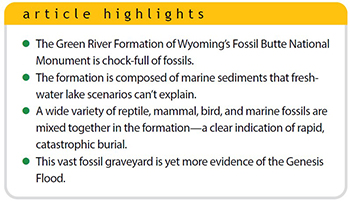 Southwestern Wyoming contains one of the most unique fossil sites in the world—Fossil Butte National Monument. Located about 11 miles west of Kemmerer, it was established as a national monument on October 23, 1972.1 The park encompasses about 13 square miles and contains several buttes, or flat-topped hills.
Southwestern Wyoming contains one of the most unique fossil sites in the world—Fossil Butte National Monument. Located about 11 miles west of Kemmerer, it was established as a national monument on October 23, 1972.1 The park encompasses about 13 square miles and contains several buttes, or flat-topped hills.
These landforms expose a rock layer known as the Green River Formation (GRF) and its diverse fossil assemblage, often called a Lagerstätte.2 The GRF is best known for its fish fossils, but it includes many other fossil types as well. Most of these fossils are found in the Fossil Butte Member, a section of the formation that measures about 200 to 260 feet thick.3
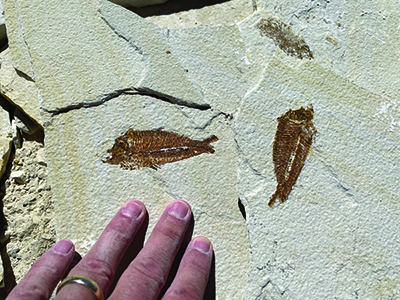
People have collected fossils on private land in the surrounding area for over a century. At one of these sites, a team of ICR scientists including myself excavated fish fossils from the Fossil Butte Member. We observed many fossilized fish species, especially Knightia, a type of small herring that’s the most common fish in the GRF. It also serves as Wyoming’s state fossil.
Conventional scientists claim the GRF represents an ancient freshwater lake. However, four observations indicate this rock unit was deposited by the global Flood and influenced by marine conditions: 1) the immense size of the formation, 2) the presence of oceanic sediments, 3) the mixture of land and marine fossils, 4) and the evidence of rapid, catastrophic burial of the fossils.
Extensive Flood Sediments
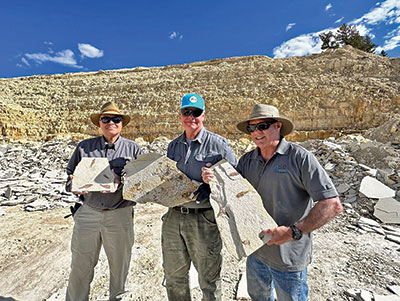
The first observation involves the extent and thickness of the Green River Formation. Composed primarily of limestone, the GRF is about 2,000 feet thick and covers 20,000 square miles of the Greater Green River Basin. Below the formation lies another 23,000 feet of Flood rocks that in total contain five of the six megasequences.4 The GRF is included in the last megasequence, the Tejas, which represents the Flood’s receding phase.4
Every basin, or depression, between the mountains of Wyoming is filled to the same level with Flood rocks. The topmost layers are identified by conventional geologists as Eocene. Although separated by mountains and uplifts that were still actively rising during the Flood, the similar nature of these rocks across all of the Wyoming basins suggests a common origin.
Exposed sediments known as the Wasatch Formation, for instance, are easily identified by their red and cream-colored, clay-rich layers. The GRF intermingles with these beds as a lens of lime-rich sediments in the Green River Basin’s center.5 Conventional geologists claim the Wasatch Formation was formed by rivers draining from the surrounding uplifts while the GRF was a freshwater lake in the middle.
However, a better explanation for these two layers is that both were deposited by the Flood. And that’s also why we find nearly the same rock progression in every basin. The Flood deposited each succeeding megasequence as the water advanced upward. As the water receded, it eroded tremendous volumes of freshly deposited sediment off the rising mountains and washed them into the Wyoming basins. This process provided the material for the topmost Eocene layers— including the GRF.
Marine Sediments in the Green River Formation
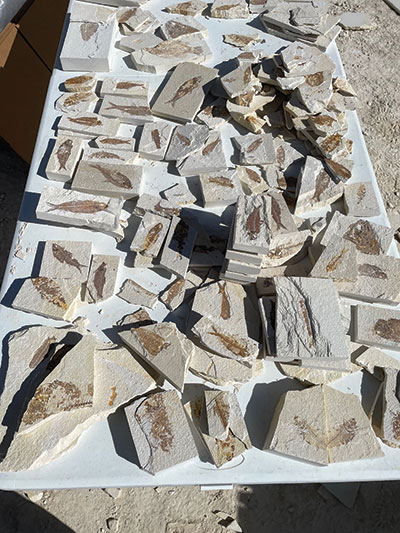
The presence of oceanic sediments also indicates a Flood origin for the Green River Formation. As I mentioned earlier, the GRF is mostly composed of limestone. This type of rock is indicative of a marine environment—especially since it’s a fine-grained variety called micrite, which usually precipitates in seawater. In addition, the GRF contains oolites, rounded tiny balls of carbonate rock that form in warm oceans, as well as the carbonate mineral dolomite in some layers. Dolomite only forms in very special types of seawater today. These carbonate-rich units also contain molds of dissolved salt crystals, another indicator of saline conditions at the time of deposition.
Furthermore, the GRF holds several beds of oil shale. The origin of this rock is attributed to the rapid burial of phytoplankton, blue-green algae, zooplankton, bacteria, pollen, and spores.5 Crystals of dolomite and calcite are also found in the oil shale.5 It’s not a typical clay-rich shale but a dolomitic marlstone (clay and carbonate mix) that’s rich in organic matter.5 Compaction and heat caused chemical reactions that changed the organics into a petroleum product, allowing the rock to burn. These data strongly indicate the GRF was deposited under marine conditions.
Mixed Land, Freshwater, and Marine Fossils
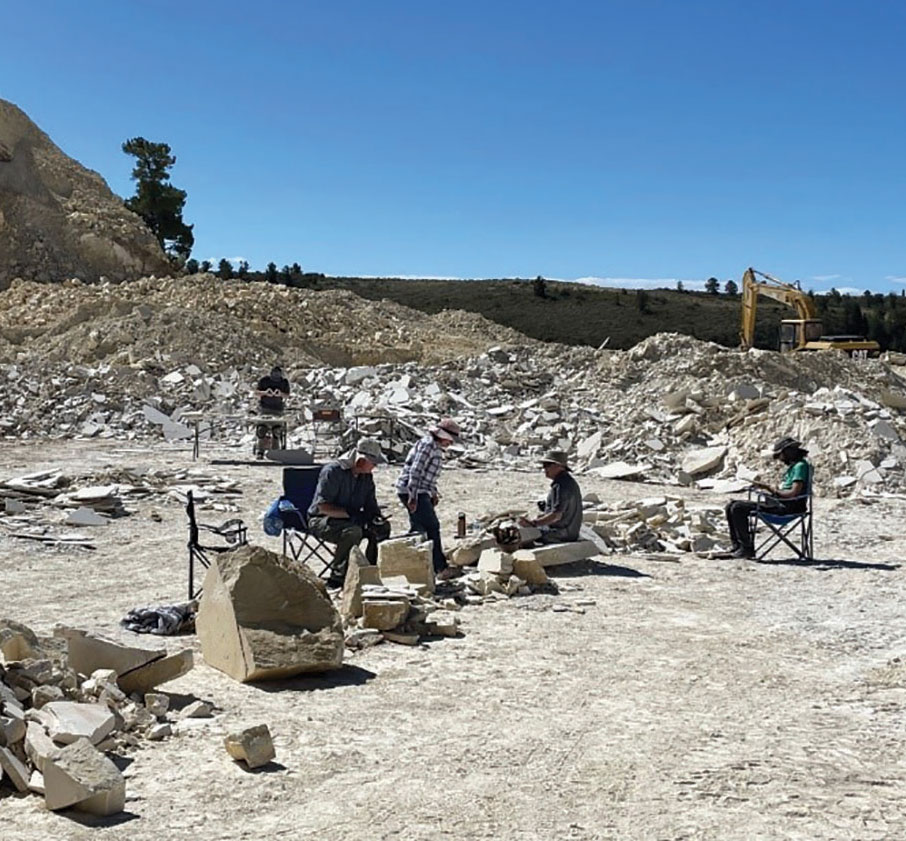
The Green River Formation contains a tremendously diverse collection of land, marine, and freshwater animals and plants. Collectors have discovered fossils of complete crocodiles, snakes, turtles, lizards, palm trees and fronds, cattails, ferns, bamboo, shrimp, crayfish, spiders, dragonflies, bees, ants, several types of birds, lemur-like mammals, bats, a tapir, and small horses. Discoveries also include fish such as stingrays, rays, herring, sardines, perch, sandfish, and gars. By far, however, the most common fossil is the herring Knightia. In fact, the University of Wyoming Geological Museum heralds it as the most common vertebrate fossil in the world!
Despite the oceanic evidence, conventional scientists stubbornly try to force these discoveries into their preconceived ideas of a freshwater lake environment. Signage at the Royal Tyrrell Museum in Alberta, Canada, states, “Modern herring live in salt water, but close Eocene relatives were abundant in the fresh water lakes of western North America.”6 A second display features a spectacularly preserved fossil of a ray and claims, “Rays are rarely preserved as fossils, in part because their skeletons are made of cartilage rather than bone. Most rays prefer salt water, making this fresh water form an even more remarkable fossil.”6
But the rocks and fossils don’t lie. A better explanation is that this remarkable assemblage of fossils, likely representing the diversity of life in the pre-Flood highest hills, was washed into the Green River Basin by massive waves as the floodwater began to recede.
Rapid Burial and Spectacularly Well-Preserved Fossils
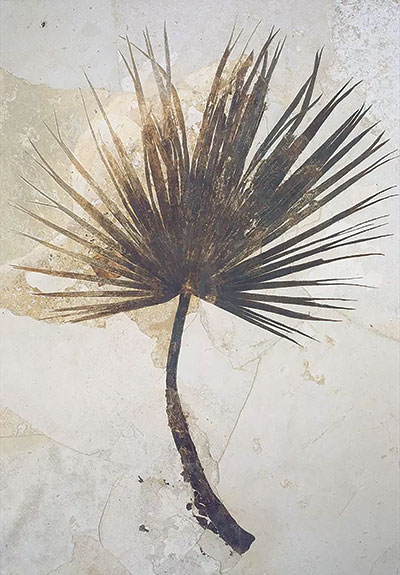
Finally, in the Green River Formation we observe evidence of rapid and continuous burial conditions. Most of the formation’s fossils are fully articulated, and many of the creatures appear to have been buried alive. Complete fish and animal fossils have been found in thin limestone layers that are just fractions of an inch thick. The lime likely rained down through the chemically mixed water, encasing the fish while they swam. As one publication states:
It would seem that rapid burial might be the most obvious reason for excellent preservation. Thus any factor or combination of factors that would cause rapid precipitation of carbonates [limestone and dolomite] and also would cause the mortality of fish would satisfy our requirements.5
Indeed, the Flood provides the best solution. ICR scientists have determined that the Flood’s receding phase formed the Tejas Megasequence,6 which contains the Green River Formation. All the observations—including the thickness and extent of the GRF, the marine sediments within, the fossils from mixed environments, and the evidence of rapid burial—support the global Flood’s formation of this massive fossil graveyard.
References
- Discover the Geology of Fossil Butte. Wyoming State Geological Survey. Posted on wsgs.wyo. gov, accessed October 2, 2023.
- Lagerstätte is a sedimentary unit that contains exceptionally well-preserved fossils that may include soft tissues.
- Grande, L. 1984. Paleontology of the Green River Formation, with a Review of the Fish Fauna, 2nd ed., Bulletin 63. Laramie, WY: The Geological Survey of Wyoming.
- Clarey, T. 2020. Carved in Stone: Geological Evidence of the Worldwide Flood. Dallas, TX: Institute for Creation Research.
- McGrew, P. O. and M. Casilliano. 1975. The Geological History of Fossil Butte National Monument and Fossil Basin. National Park Service Occasional Paper No. 3. Washington, DC: National Park Service, Dept. of the Interior.
- Clarey, T. 2016. Fresh Water and Salt Water Don’t Mix. Acts & Facts. 45 (11): 9.
* Dr. Clarey is Director of Research at the Institute for Creation Research and earned his Ph.D. in geology from Western Michigan University.



















